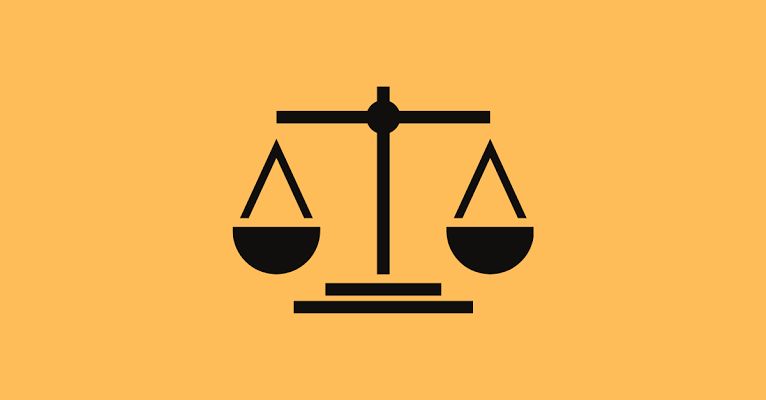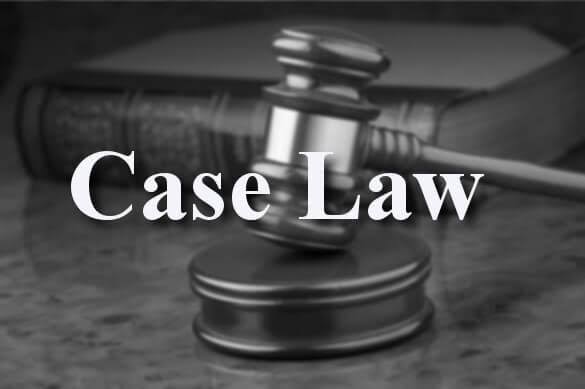Author: Swayamsi Swain, KIIT School of Law
To the Point
The decision of the Supreme Court in Indian Performing Right Society Ltd. v. Eastern Indian Motion Pictures Association 1977 2 SCC 820 is a landmark precedent in intellectual property law in India. The case involved a dispute as to whether composers, lyricists, and authors have their distinct performing rights over their music compositions after they have been included in a film’s soundtrack. The central legal question was whether the authorization for the film producers to use musical compositions includes the later right to perform them publicly, or if additional payments must be made by authors for subsequent exploitments. The Supreme Court affirmed the principle that the two rights are distinct — while the producers of a film can be licensed to include the musical compositions in their movie, the authors maintain their distinct and independent performing rights. This implied that when a theatre screens a movie and its soundtrack is heard by a wide public, discrete payments or licenses have to be paid to the authors or their collective societies, their continuous financial and moral rights. This precedent found a sensitive equilibrium between incentivizing creativity and respecting commercial practice, upholding authors’ rights over their intellectual works while enhancing their power to profit from their works in an expanding media ecosystem.
Use of Legal Jargon
This case centers on a sophisticated set of legal constructs and terminologies that are at the heart of intellectual property law. The Supreme Court’s ruling finds echo in crucial vocabulary including authorization, communication to the public, performing rights, underlying works, assignment of rights, and economic rights — all of which together regulate the relationship between authors, producers, and the public at large. The interpretive methodology followed by the Supreme Court was based on Section 2(f) (defining “communication to the public”), Section 13(1) (laying down subject-matter of protection), Section 14 (defining “copyright”), Section 17 (ascertaining first ownership), Section 18 (assignment), and Section 30 (licenses) of the Indian Copyright Act, 1957. Notably, the Supreme Court reasserted the rule that permission of the author to include his work in a film does not ipso facto transfer or annihilate his independent performing rights. This perspective sustains the integrity of the moral and financial rights of the author and avoids producers disregarding their distinct entitlements. In addition, the judgment highlights the importance of differentiating between mechanical and performing rights and demonstrates a subtle understanding of intellectual property regimes. This ruling is a precedent that confirms the need for distinct payments and licenses if a musical work is performed together with its film counterpart, thus recognizing the author’s continuous creative input.
The Proof
The Supreme Court, in rendering its verdict, went through the factual background with great scrutiny together with the relevant legal framework. The case came up when the Indian Performing Right Society (IPRS) — being a collective society of authors, composers, and lyricists — insisted on having different payments from film producers and cinemas for the future performance of their musical compositions. The Eastern Indian Motion Pictures Association (EIMPA) objected to the payments, stating that their right to include the musical compositions in their films already included subsequent public performances. The Supreme Court held in favor of IPRS’s contention that the permission to produce a motion picture rendition under Section 17 and 18 did not deprive the authors of their individual and independent performance rights under Section 14 and 30. The position was aided by precedent and policy considerations and represented a fine balance between commercial justice and moral justice for authors. Notably, the Supreme Court acknowledged the function of collecting societies in effectively negotiating remuneration and distributing them to their respective authors. The decision strongly put an end to a long-standing dispute, upholding that authors have their independent performing rights even when their works become part of a bigger cinematic work.
Abstract
Indian Performing Right Society Ltd. v. Eastern Indian Motion Pictures Association (1977) of the Supreme Court is a landmark in intellectual property law in India. The case specifically tackled the sensitive juncture between the moral and economic rights of authors and the commercial business of the film industry. The main legal debate concerned whether or not the permission granted to motion picture producers to use musical compositions in their movies included also the following and independent right to play them in public. The Supreme Court endorsed the belief that the two rights are independent and severable — that authors maintain their individual performing rights in addition to the film rights. This ruling had a strong impact on future decisions and policy-making concerning intellectual property and collective administration of rights in India. Additionally, it acknowledged the societies’ role, such as that of IPRS, in serving as collective agents of authors’ monetary and moral rights. The ruling thus balanced carefully between rewarding innovation and respecting industry conventions, ensuring the participation of authors in the financial gains arising from their creative efforts on an ongoing basis. This precedent remains current, reaffirming the doctrine that creativity is the foundation of intellectual property regimes and must be acknowledged, remunerated, and properly secured in all its expressions.
Case Laws
1. Performing Right Society Ltd. v. Hammonds —
This precedent is an important ruling in appreciating the distinctiveness of performing rights from mechanical or recording rights. Here, the Chancery Division reinforced the position that permission to make a mechanical copy of a musical work does not ipso facto transfer the distinct right to perform it in public. This rule rings perfectly with the Supreme Court’s finding in IPRS v. EIMPA (1977), supporting that distinct rights are distinct even after a composite license is issued.
2. R.G. Anand v. Delux Films —
In this Supreme Court case, the Court resolved the sensitive balance between expression and imitation in intellectual property law. According to the Court, ideas can be borrowed free, but the expression or the form of ideas cannot be copied without permission. This case highlights the need to safeguard creativity, yet respect the principle that borrowing should be fair, and not rise to the level of infringement of intellectual property rights — a position that aligns with IPRS’s assertion for distinct performing rights as well as cinematic rights.
3. Ferris v. Society of Authors —
In this ruling, the role of collective administration societies in safeguarding authors’ economic rights was acknowledged. The Chancery maintained their right to collectively license and receive payments for works of their members. The precedent was set for similar organizations such as IPRS, whereby authors are allowed to collectively administer their rights while maintaining their moral and economic prerogatives. The Supreme Court’s confirmation of independent performing rights in IPRS v. EIMPA (1977) further solidifies this collective mechanism, promoting fairness and justice among creative producers within the expanding media environment.
Conclusion
The Indian Performing Right Society Ltd. v. Eastern Indian Motion Pictures Association (1977) ruling of the Supreme Court highlights the need for a subtle balance between upholding authors’ moral and economic rights on the one hand and acceptance of commercial norms in the film-making business on the other. This case law reasserts that composers and lyricists have distinct and independent performing rights even when their compositions are part of cinematograph films. The ruling echoes powerfully in the current intellectual property climate, upholding a policy perspective that creativity must not be devalued or ignored in its monetary benefits. It also reinforces the role of collective societies to secure fair payments for authors’ future exploitations, upholding fairness and justice for the people whose creativity underpins much commercial endeavor. This precedent not only protects writers’ economic incentives but also legitimates their moral stake in their works — a vital consideration for promoting continued creativity and innovation. The Supreme Court’s decision remains a testament to the doctrine that intellectual property systems need to consider both the rights of authors and the commercial context in which their work is employed, thus contributing to a more equitable, fairer, and more culturally vibrant society.
FAQs
Q1: What was the primary legal issue in IPRS v. EIMPA (1977)?
The principal debate concerned the question of whether writers keep their distinct performing rights once their musical works are included in movie films. Movie producers and cinema proprietors contended that their permission to use such musical works in films already protected subsequent public performance. But the authors, along with their representative body, IPRS, demanded that their performing rights are independent and autonomous, paying an extra fee for every future communication to the public. This issue directly put forward the fine line between respecting authors’ intellectual creativity and dealing with film industry commercial practices.
Q2: How did the Supreme Court view this controversy?
The Supreme Court followed the position that authors continue to have their independent performing rights in addition to the cinematic rights. It maintained the two rights are not fungible, and obtaining permission for inclusion in a movie cannot eliminate or reduce the authors from licensing future performances. This rule ensures the authors continue to be stakeholders in their work and are properly rewarded for future exploitations, which shows equity and justice in intellectual property systems.
Q3: What is the role of IPRS after this judgment?
The IPRS functions as a collective administration society, negotiating licenses and receiving payments in advance on behalf of its members — composers, lyricists, and authors — for future public performances of their works. The collective administration assists in simplifying payments, safeguarding financial rights, and allowing authors to assert their rights collectively in an expanding media environment so that their creativity may be seen, appreciated, and rewarded in a sustainable way.
Q4: What is the impact of this precedent on the movie industry?
This precedent adds another financial burden on producers and theatre owners to pay separate license fees for the next performance of musical pieces integrated into movies — in accordance with justice and fairness for the works of authors. This implies that film makers cannot blindly depend on their original sanction to perform a musical composition in their movie; they have to take into consideration extra payments whenever the movie is later performed or shown in cinemas or other media. This requirement assists in developing a sustainable environment in which writers, composers, and lyricists can still be paid for their creative contributions, receiving a proper portion of profits by all participants in the industry and improving incentives for further creative work.
Q5: Why is this judgment important today?
This precedent serves to protect authors’ moral and economic rights and promote creativity and equity in intellectual property systems — a principle that resonates today with increasing media and digital outlets throughout the world. In an era where streaming platforms, digital media, and increasing film productions are dominating, the identification and independent administration of performing rights allow authors to maintain ownership of their original work and gain perpetual financial compensation for their inputs. This strategy not only protects their incomes but is also a strong incentive towards additional innovation, creativity, and expression, thus laying the groundwork for a rich, diverse, and meaningful media ecosystem that serves both creators and society as a whole.





